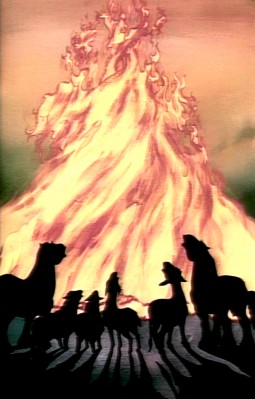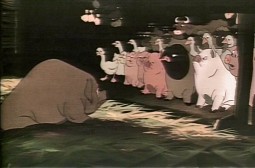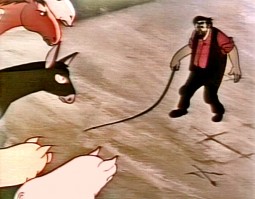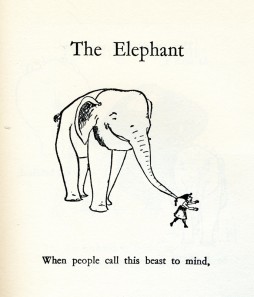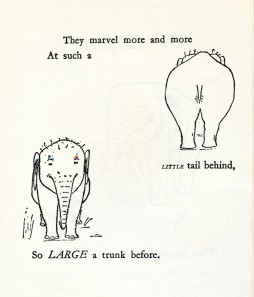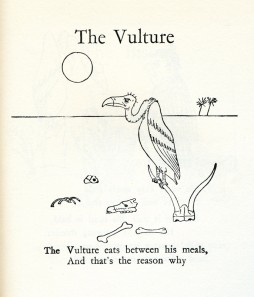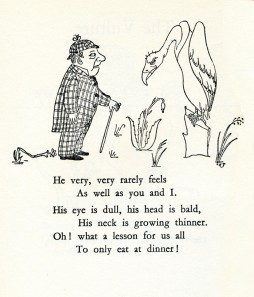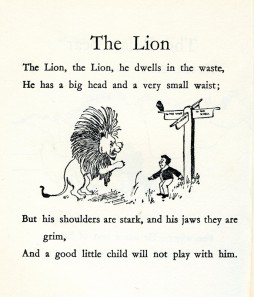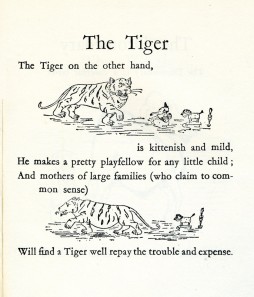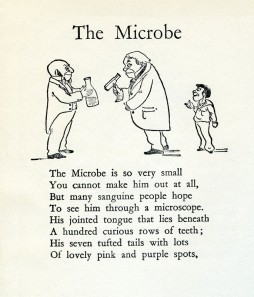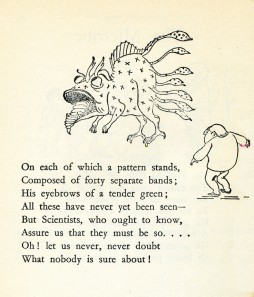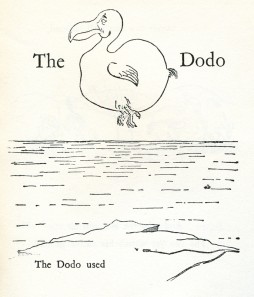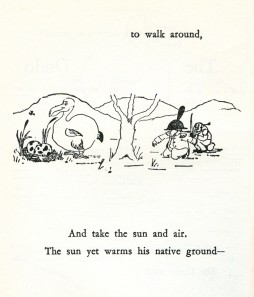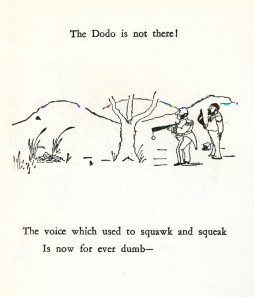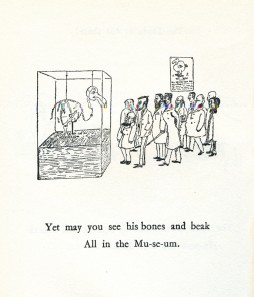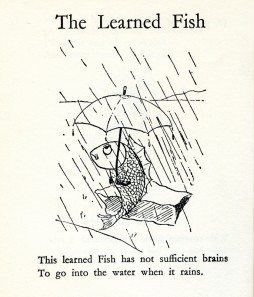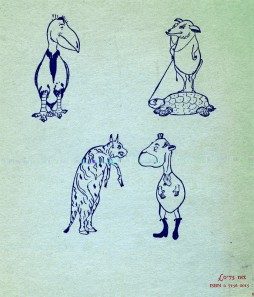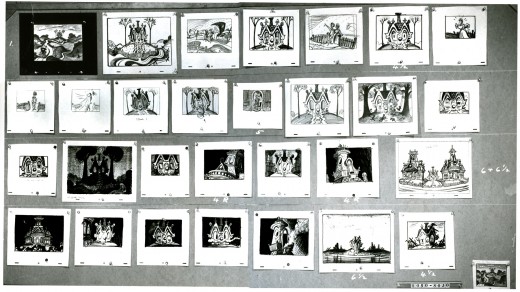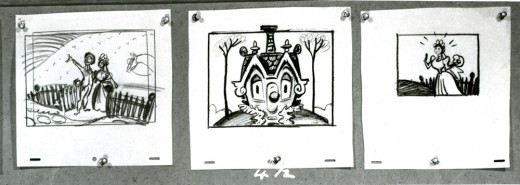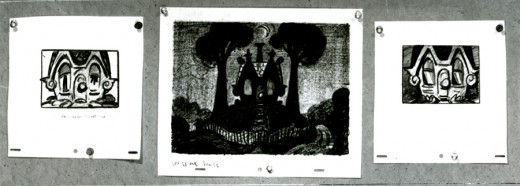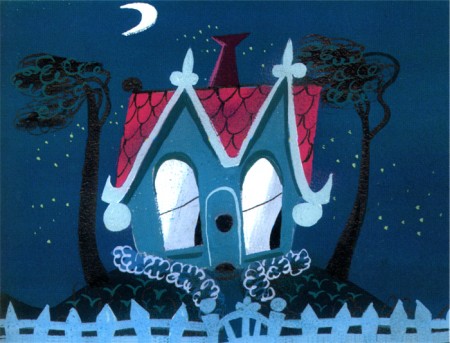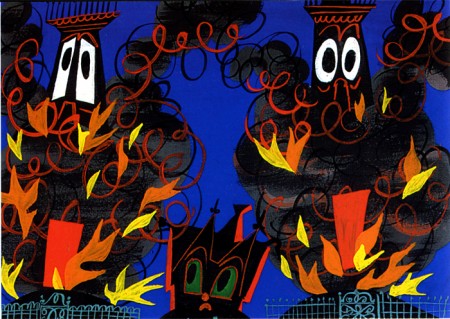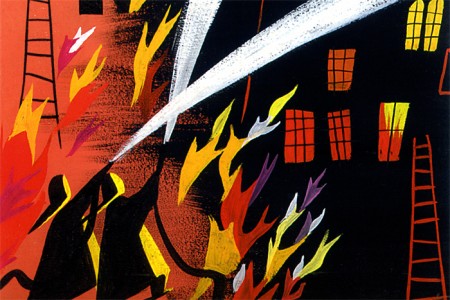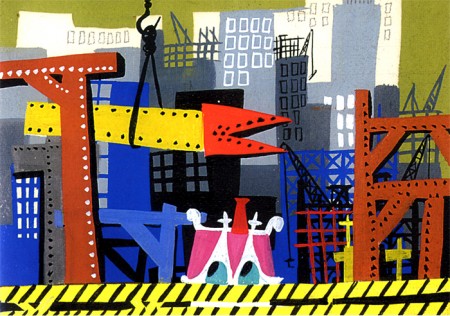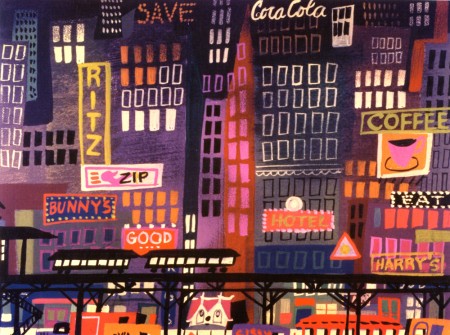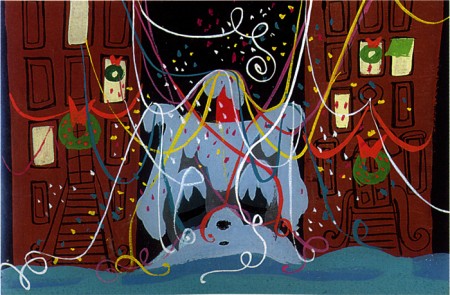Category ArchiveBooks
Animation Artifacts &Books &Disney &Story & Storyboards 24 Mar 2008 08:07 am
The Art of Animation
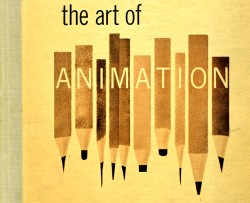 – One of my most treasured gift/memories was receiving a Christmas present of the newly published book, The Art of Animation by Bob Thomas. This came to me in 1958. Prior to receiving it, I had to scour my local public library, as a child, to read about animation. Here was this book that came awfully close to inventing the coffee table book for animated cartoons – which generally meant Disney in those days. Lots of beautifully colored photos of animation artists at work and plenty of Disney cartoon images. It even a filmography for about 100 people who’d worked at the studio, or at least a Disneyography for those people.
– One of my most treasured gift/memories was receiving a Christmas present of the newly published book, The Art of Animation by Bob Thomas. This came to me in 1958. Prior to receiving it, I had to scour my local public library, as a child, to read about animation. Here was this book that came awfully close to inventing the coffee table book for animated cartoons – which generally meant Disney in those days. Lots of beautifully colored photos of animation artists at work and plenty of Disney cartoon images. It even a filmography for about 100 people who’d worked at the studio, or at least a Disneyography for those people.
Don Graham was an art instructor at Chouinard (which eventually became CalArts) when Walt Disney brought him in to supervise night classes for his animators. He was enormously successful and a strong influence on all the young animators, and he continued at the studio until WWII broke out. Disney brought him back to the studio in 1950, and he 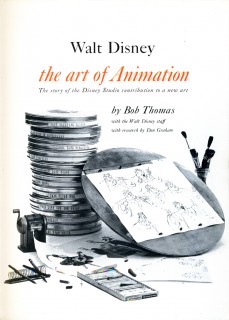 did research for a film on Art. This research was to be a book called “The Art of Animation,” but it never quite gelled to Disney’s satisfaction. (I have a xerox copy in storage and someday I’ll post a bit of it.) He also wrote a book entitled Composing Pictures which instructs in methods of composition.
did research for a film on Art. This research was to be a book called “The Art of Animation,” but it never quite gelled to Disney’s satisfaction. (I have a xerox copy in storage and someday I’ll post a bit of it.) He also wrote a book entitled Composing Pictures which instructs in methods of composition.
When Sleeping Beauty neared its release, Bob Thomas was brought in to write a book about animation that would also focus on Sleeping Beauty. Thomas used some of Graham’s notes for the book he’d been preparing for Disney.
This is the book that was published in 1958.
I suspect that my receiving the book at such a young age made it all the more precious to me, and to this day it gives me positive feelings whenever I hit on certain pages and pictures in it. There’s a photo of Eyvind Earle holding up a cel of one of the three faeries that ALWAYS sends a chill up my back. It strikes to the heart of something I love about animation, and it inspires me like little else can. I can’t say what it is about this picture, but it speaks to me.
I thought it might be entertaining to post a couple of pages from the book. The opening chapter on “Story” seems pertinent since so many of our recent posts have been Bill Peet storyboards. Here’s a bit of his board for Sleeping Beauty.
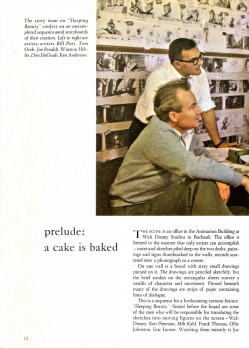 12
12 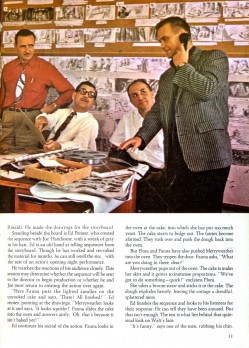 13
13
________(Click any image to enlarge so you can read it.)
Books &Commentary &Illustration 19 Mar 2008 07:58 am
Only God Can Make a Tree
- If you’ve only heard clips of the Obama speech given yesterday, spend the time and watch the whole thing. It’s time to plant apples here. Part 1, Part 2, Part 3, Part 4.
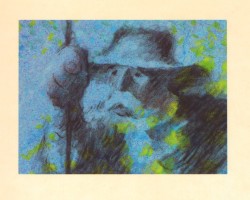 - Mark Mayerson features an article on his blog about Frédéric Back and the news about an exhibit of his artwork. I’m not in Canada, so it’s hard to see the exhibit and the screeenings. However, I thought it might be a good idea to look again at Back’s stunning film, The Man Who Planted Trees. Naturally, I want to share what I’m viewing with you, so I thought to put up some frame grabs. This film, though, is so stunning, I don’t think fuzzy frame grabs will do.
- Mark Mayerson features an article on his blog about Frédéric Back and the news about an exhibit of his artwork. I’m not in Canada, so it’s hard to see the exhibit and the screeenings. However, I thought it might be a good idea to look again at Back’s stunning film, The Man Who Planted Trees. Naturally, I want to share what I’m viewing with you, so I thought to put up some frame grabs. This film, though, is so stunning, I don’t think fuzzy frame grabs will do.
I have a book of the film which was illustrated by Frédéric Back from art for the film. It’s in French, and I haven’t attempted to translate it. I’m posting these images purely for the artwork. Aside from the cover, all six images I’m posting are double-page spreads. The book has about 50 pages, so I may post more some other day, but for now enjoy these.

(Click any image to enlarge.)
Books 02 Feb 2008 09:18 am
Steig’s Bdsplr
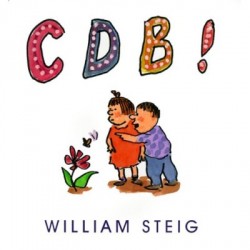 - William Steig’s first big children’s book was CDB published in 1968. This book was an enormous success. It used letters to communicate ideas. The cover tells it all. C D B (see the bee – get it?).
- William Steig’s first big children’s book was CDB published in 1968. This book was an enormous success. It used letters to communicate ideas. The cover tells it all. C D B (see the bee – get it?).
Below are a couple of other pages illustrated to demonstrate further how he took the idea forward.
The book was enough of a success that there was a sequel – C D C published in 1984.
Most people, I think, are familiar with these two books but do not know the original sequel (published before CDC.) That book is The Bad Speller, published in 1970.
I thought I’d post a couple of images from this book. They’re pretty amusing, and I think the drawings border the work Steig was doing for The New Yorker and mixing it with his children’s illustrations. Several of the images definitely predate some of the books he would eventually write.
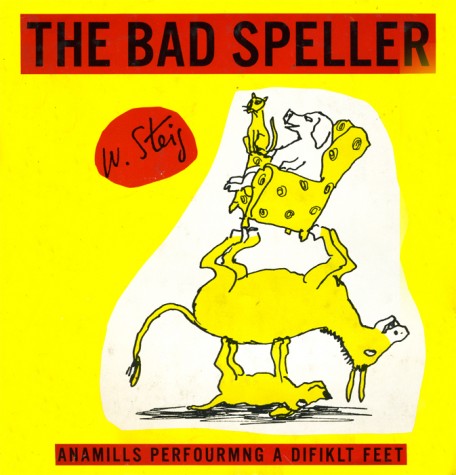
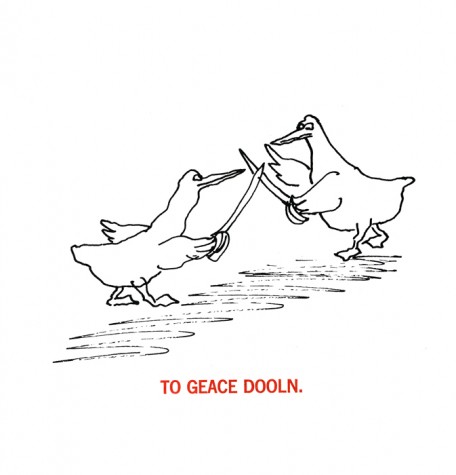
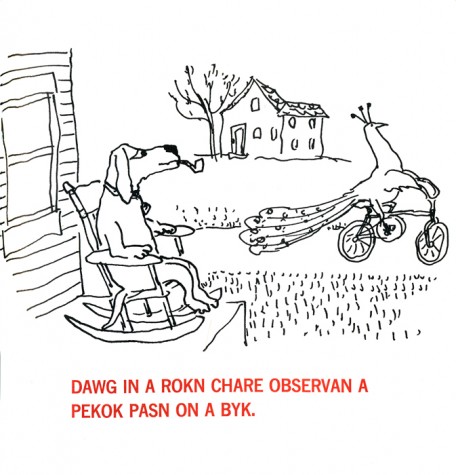
Animation Artifacts &Books &Disney &Mary Blair &Peet &Story & Storyboards 29 Jan 2008 09:08 am
Last Little House – 5
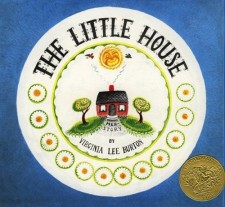 – Following up yesterday’s posting, here’s the last of the phographed storyboards loaned to me by John Canemaker. It was a board done by Bill Peet and Bill Cottrell. Since Cottrell, Disney’s brother-in-law, didn’t draw, he undoubtedly did a script adaptation from the Virginia Lee Burton book.
– Following up yesterday’s posting, here’s the last of the phographed storyboards loaned to me by John Canemaker. It was a board done by Bill Peet and Bill Cottrell. Since Cottrell, Disney’s brother-in-law, didn’t draw, he undoubtedly did a script adaptation from the Virginia Lee Burton book.
Don’t forget to look at John Canemaker ‘s book The Art and Flair of Mary Blair. This book goes well into the design of this film with lots of illustrations.
Here are links to the other 4 parts of this
Little House storyboard fiesta:
______Part 1 ______Part 2 ______Part 3 ______Part 4
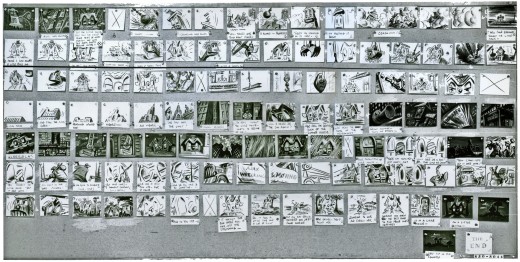
This is the 5th photo of the storyboard as it stands. To allow you to see the images larger, I’ve split the board up into sections.
 1a
1a
___Click any image to enlarge.
Books &Frame Grabs &Illustration 25 Jan 2008 08:54 am
Steadman’s Animal Farm
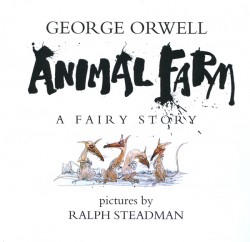
- I saw Halas & Batchelor’s Animal Farm at a seminal point in my animation development, so I guess you could say I was struck over the head at just the right time. The same is true of Lady and the Tramp, Sleeping Beauty or Magoo’s Christmas Carol. They, and a number of other films from that period, have enormously affected how I see animated cartoons and what it is that I like. Somehow, I think I’ve mentioned this before.
I am also a big fan of Ralph Steadman‘s work. For some inspiration, I was looking over his illustrations for Orwell’s book. The story vibrates in his hands. I thought it might be interesting to post some of these and find relative images from the film to see how they compare.
Make no bones about it, I think Steadman is as close to an artist an illustrator can become, and I have no similar thoughts about the artwork for the Halas & Batchelor film. I am interested, however, in how different people view images they get from the same text.
_ _
_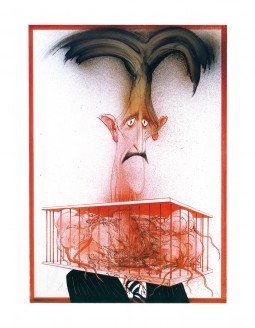
___On the left, we have the book’s dust jacket, cover. On the right, Steadman offers a
___caricature of George Orwell holding rats in a cage. A reference out of “1984.”
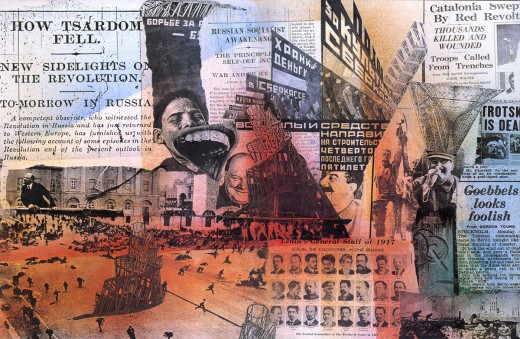
___The inner cover of the book’s front features this double page collage/painting by
___Steadman. Politics of Orwell’s time is put front and center.
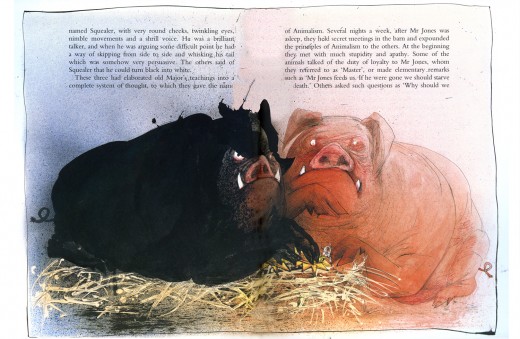
____Napoleon and Snowball closely align with each other and give each other support.
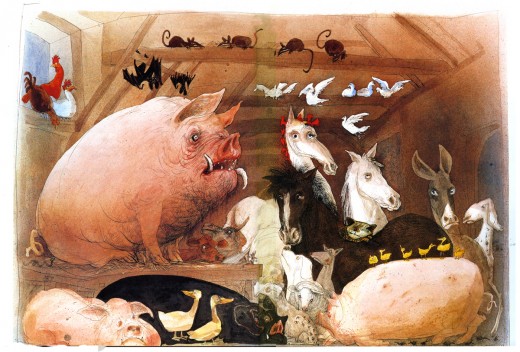
_______All the animals meet in the barn to create a plan. The pigs take the lead.
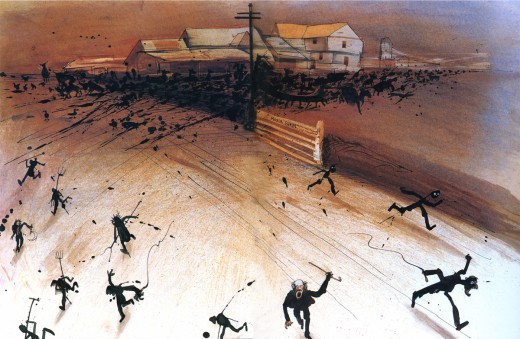
___The major battle with the humans ends with the farmers running away from the
___animals who have joined together to take over the farm.
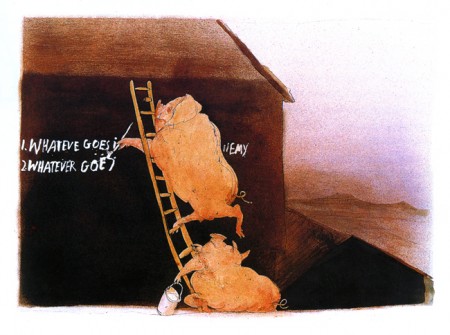
The pigs post new rules that they’ve created.
_
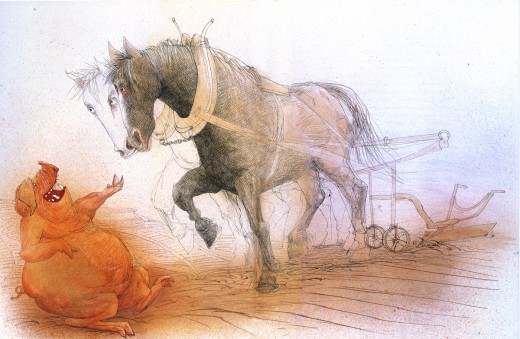
________________The horse, Boxer, is the strongest and most loyal worker.
The Halas & Batchelor Film
_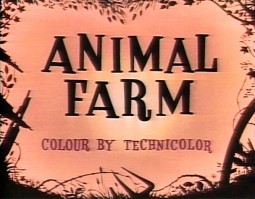 _
_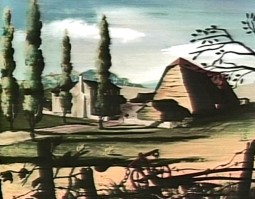
__________The Halas and Batchelor film starts out with master shots of the farm.
__The animals push the farmer and his drinking buddies off the farm and end the
__sequence with a rousing animal song around a fire.
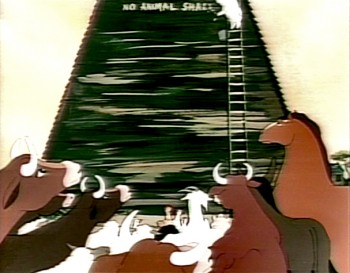
__
__
__
The rules are written on the barn wall while cross cutting to Napoleon hiding newborn puppies in the hayloft. We’ll later learn that he’s trained these dogs to grow into attack guards for him when he takes over the farm. It’s interesting that the French version of the book calls this pig Caesar.
__
__
______(As ever, click any image to enlarge it.)
Books &Illustration 24 Jan 2008 09:24 am
Belloc’s Bestiary
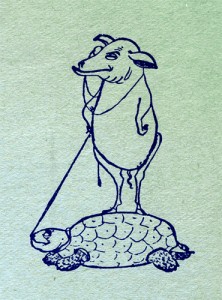 - I have two books of chilldren’s verse written by Hilaire Belloc. I’ve been a fan of these poems and have prized the books. I thought it worth sharing.
- I have two books of chilldren’s verse written by Hilaire Belloc. I’ve been a fan of these poems and have prized the books. I thought it worth sharing.
After graduating from Oxford, Hilaire Belloc served in Parliament. After two terms, thoroughly disatisfied with public office, he left the House of Commons. He wrote extensive commentaries during the first World War. His first son was killed in that conflict; his second son during the second World War.
He was a very opinionated political writer, which didn’t help his reputation during his life. He also refused to be pigeon-holed writing in many different styles and forms. Hence he was barely accepted by the cogniscenti of the time. Many of his children’s poems are whimsical but quite dark. Victoriana lives on in his mood and attitude. His poems are all on line (none of the illustrations are there).
B.T.B. was properly named Basil Templeton Blackwood, the third son of the Marquess of Dufferin. He met Belloc when they were both students at Oxford. He became a Lieutenant in the Grenadier Guards in WW I and was killed in action in 1917.
Blackwood became a solicitor, but he illustrated several of Belloc’s books. These include:
The Bad Child’s Book of Beasts (1896)
More Beasts (1897)
The Modern Traveller (1898)
A Moral Alphabet (1899)
Cautionary Tales for Children (1907)
More Peers (1911).
Here we have selected pages from the first two of these books which were combined into one volume I own. It was last published by Duckworth in 1971. A “Bestiary”, of course, is an alphabetical listing of animal poems originally designed to teach children the alphabet. (Sorry that I post these pages out of alphabetical order.)
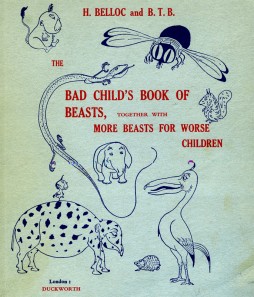 _
_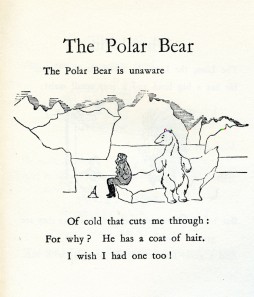
______(Click any image to enlarge.)
Animation Artifacts &Books &Disney &Illustration &Mary Blair &Peet &Story & Storyboards 21 Jan 2008 09:35 am
Peet and Blair’s Little House
- Earlier this week, I posted John Canemaker ‘s loan of a couple of storyboards by Bill Peet from Bill Cottrell’s script for The Little House. This was adapted from the children’s book by Virgina Lee Burton.
Today I’ve got a fifth board. I’m not sure it’s storyboard; the images look a bit more like background layouts. Perhaps it’s something in between the two. I’m not even sure the drawings are by Bill Peet.
This is the actual board. However, I’m posting it as I did the others in pieces so that it can best be enlarged for good viewing.
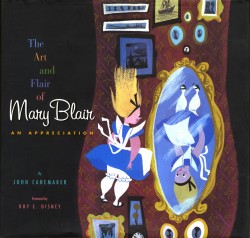
_
- Mary Blair was the dominating design force on this film, and her work stands out vigorously.
John’s exceptional book, The Art and Flair of Mary Blair includes a number of key pieces of art for this short. I think it might be remiss for me not to post them alongside these storyboards to see how Peet and Blair worked together. With thanks and apologies to John and his excellent book, here are the color scans.
_
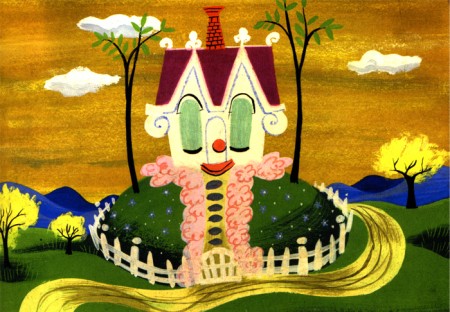
(Click any image to enlarge.)
Books &Illustration 18 Jan 2008 09:28 am
Steig Children’s Books
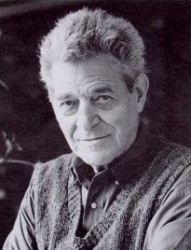 - Continuing my obsession with William Steig I’m posting some artwork from some of Seig’s children’s books. I’ve done four of the books as films: Abel’s Island, Doctor DeSoto, The Amazing Bone and Sylvester and the Magic Pebble. I’ve always felt a kinship in the artwork of Steig and find it easy to draw in that style. It just feels natural to me, probably because I’ve been doing it since I was about 12.
- Continuing my obsession with William Steig I’m posting some artwork from some of Seig’s children’s books. I’ve done four of the books as films: Abel’s Island, Doctor DeSoto, The Amazing Bone and Sylvester and the Magic Pebble. I’ve always felt a kinship in the artwork of Steig and find it easy to draw in that style. It just feels natural to me, probably because I’ve been doing it since I was about 12.
You can view a lot of the original art at The Jewish Museum in NYC until March 16, 2008. The exhibit is delightful, and you’ll see how intense the original colors are in his artwork. William Steig’s brother, Arthur Steig, developed dozens of art supplies over the years, including Luma Colors, a line of brilliant watercolors, and calligraphic inks that would not clog technical pens. William used these Luma dyes profusely in his work. The first use was in what was originally called The Bad Island (1969) and was later republished with a new text as The Rotten Island.
These Luma colors are delicate, and I feel they often don’t publish well in the printing process. The colors of the originals are absolutely radiant, whereas even in the new art book, The Art of William Steig, many of the colors are a bit on the reddish side, and have lost something in the transition.
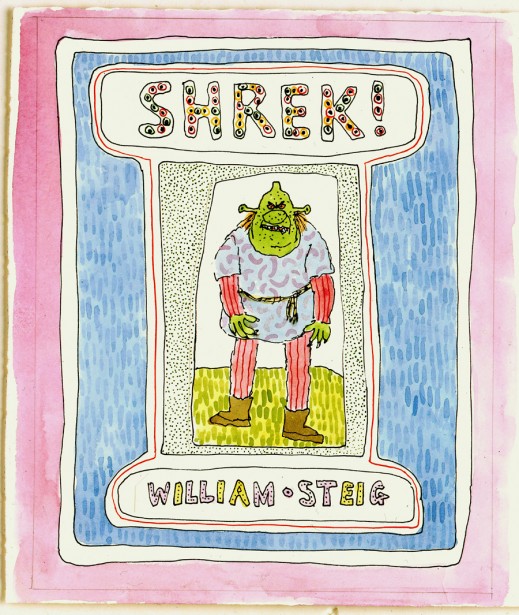
Cover illustration for Shrek! (1990)
pen and ink and watercolor on paper
© 1990 William Steig
Can someone tell me how they got from these illustrations to the ugly art on display in the Shrek films? Even the drawings on display at the museum from Dreamworks are much more palatable than those films. It’s sad.
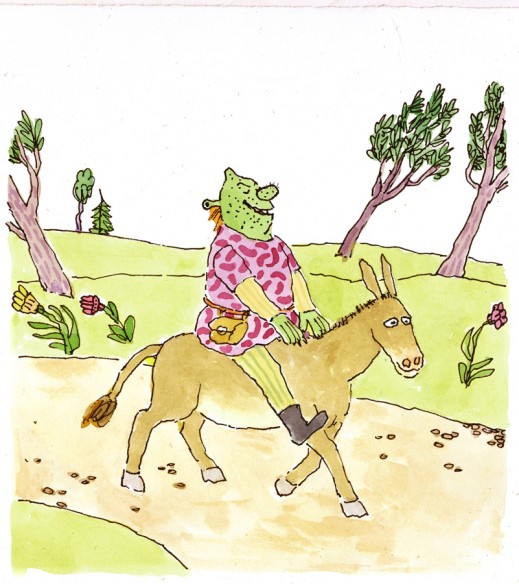
“‘You jabbering jackass!’ Shrek screamedâ€
pen and ink and watercolor on paper
© 1990 William Steig
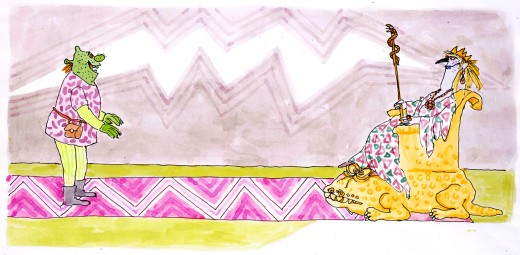
“There before him was the most stunningly ugly princess on the surface of the planetâ€
pen and ink and watercolor on paper
© 1990 William Steig
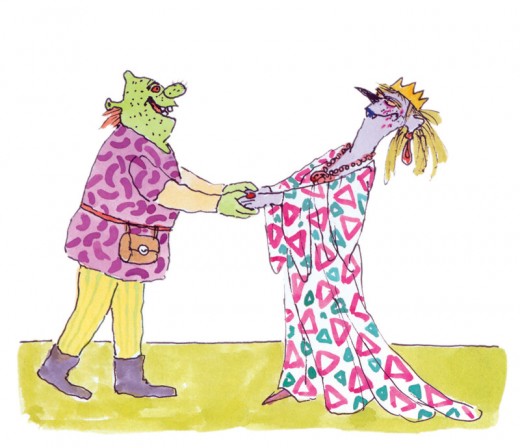
“Oh, ghastly you, with lips of blueâ€
pen and ink and watercolor on paper
© 1990 William Steig
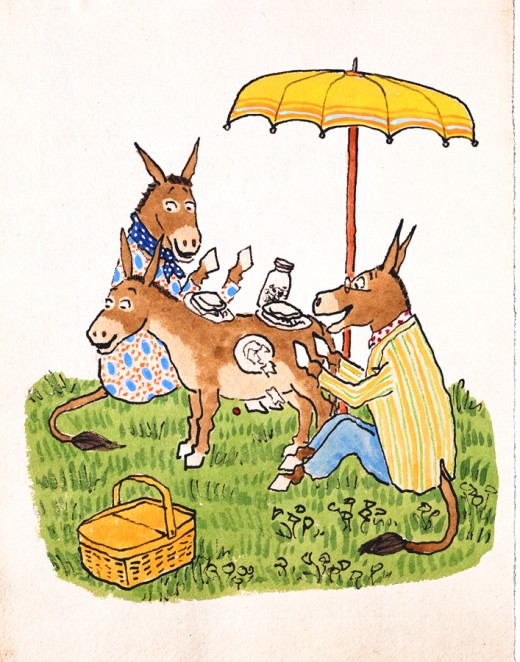
“‘Oh, how I wish he were here with us on this lovely May day,’ said Mrs. Duncanâ€
preliminary illustration for Sylvester and the Magic Pebble (1969)
pen and ink and watercolor on paper
© 1969 William Steig, renewed 1997
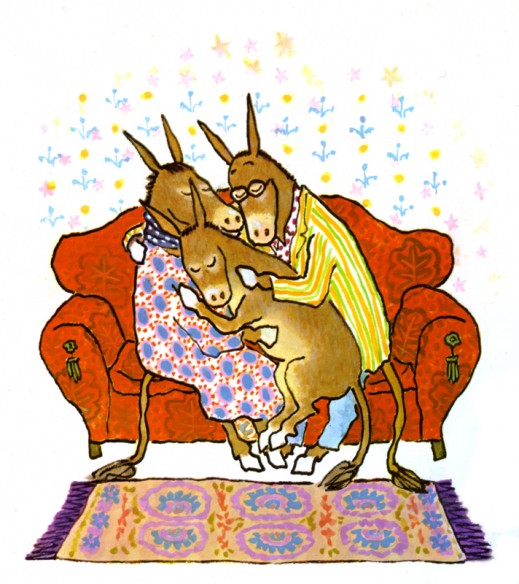
Final illustration for Sylvester and the Magic Pebble (1969)
pen and ink and watercolor on paper
© 1969 William Steig, renewed 1997
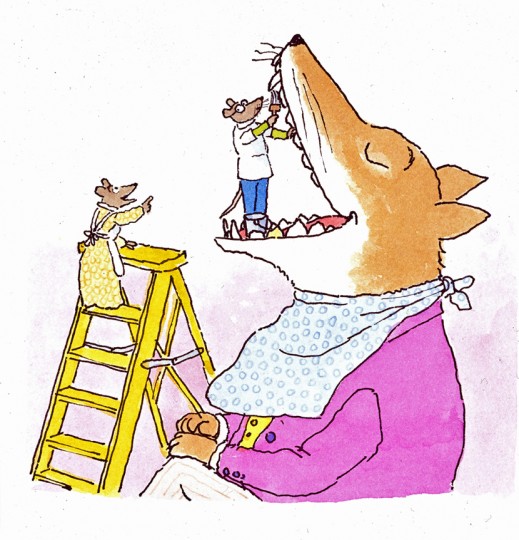
“Doctor De Soto stepped into the fox’s mouthâ€
illustration for Doctor De Soto (1982)
pen and ink and watercolor on paper
© 1982 William Steig
Tomorrow’s Saturday. The museum is free. There’s no excuse. Go, take a look if you’re in the NY area.
Articles on Animation &Books &Disney 12 Jan 2008 10:14 am
Fantasia Program 2
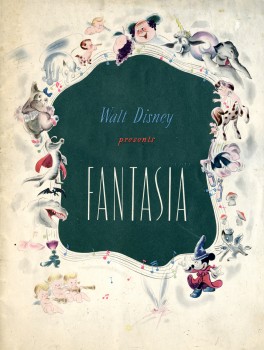 - Last week, I posted the souvenir booklet sold with the initial roadshow presentation of Fantasia. Here I’lll complete the post of the magazine.
- Last week, I posted the souvenir booklet sold with the initial roadshow presentation of Fantasia. Here I’lll complete the post of the magazine.
The booklet certainly feels quality. The paper is good and the illustrations are high caliber. However, many of the images were reused in several other books on the market at the time, notably the Deems Taylor book, Fantasia. That book, in itself, feels more like a souvenir of the film rather than anything more.
The booklet is quite handy for all the credits given. It makes the film feel important. One wonders if others of the early films had similar books. I haven’t seen any but assume they must have existed. If anyone knows for sure, leave a comment.
So, here it is. I’ve split it into two posts with #2 to follow.
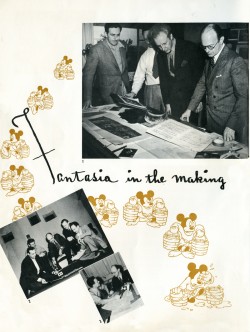 12
12
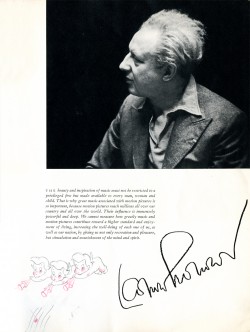
____(Click any image to enlarge to a readable size.)
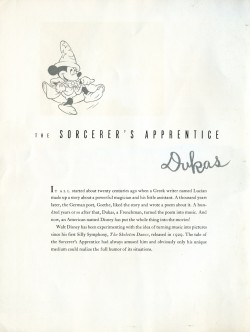 14
14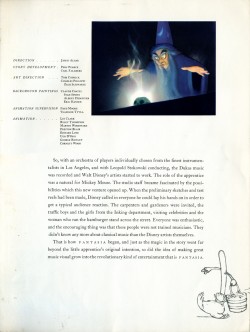 15
15
____
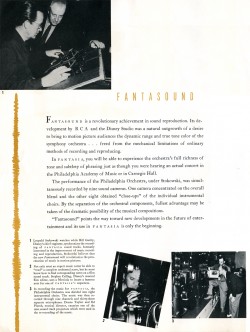 16
16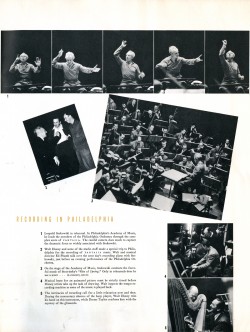 17
17
____
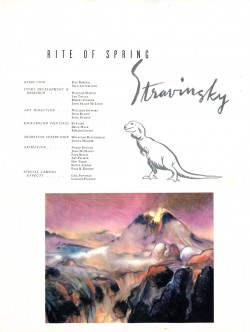 18
18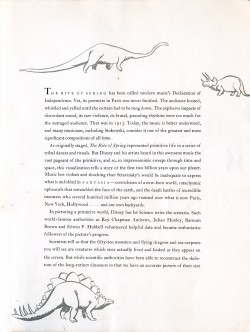 19
19
____
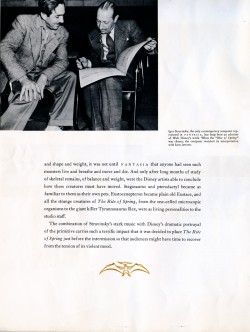 20
20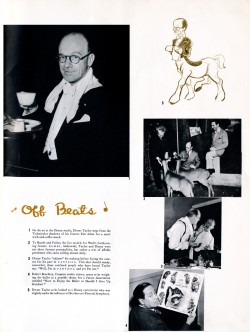 21
21
____
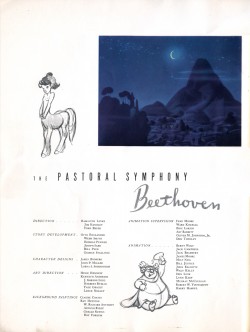 22_
22_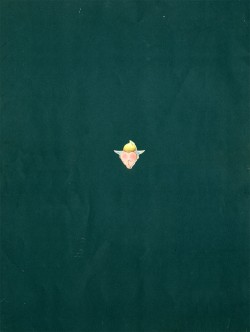
Articles on Animation &Books &Disney 04 Jan 2008 09:11 am
Fantasia Program 1
 - Back in the olden days, films were released very differently.
- Back in the olden days, films were released very differently.
It wasn’t until the early 60′s that an important film opened at more than one theater in a town/city. (I can remember that United Artists package of ten films that first did this. It included To Kill A Mockingbird, Dr. No, and A Hard Day’s Night. Even then we were talking about 60 theaters not 3000.)
In New York key films opened on Broadway, in Manhattan, and you had to buy reserved seat tickets in advance to see it. The film would play there for a month or two and then move onto more theaters locally around town.
I can remember the trip to see How The West Was Won, The Tales of The Brothers Grimm, Lawrence of Arabia, and others.
With this higher priced film presentation, you were given a small booklet or you could buy the deluxe souvenir booklet. In 1963, I found this deluxe booklet for the initial premiere of Fantasia. I bought it from a used-book dealer while I was still in college.
This past week, I watched Fantasia again and used the program to read some credits. That’s when I thought it might be interesting to feature the booklet on this site.
So, here it is. I’ve split it into two posts with #2 to follow.
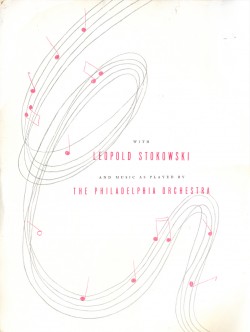 1
1  2
2
____(Click any image to enlarge to a readable size.)
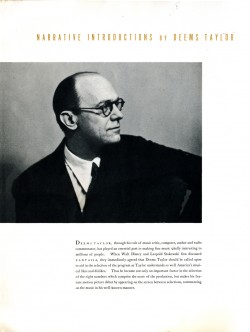 3
3 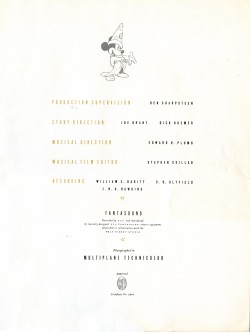 4
4
____
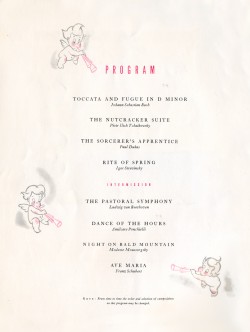 5
5 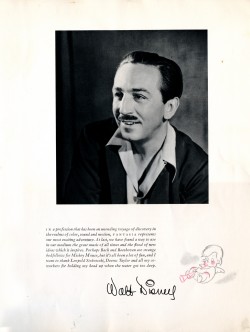 6
6
____
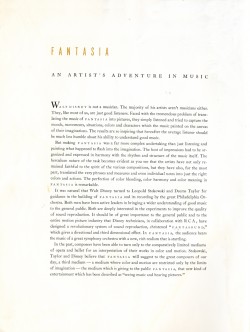 7
7 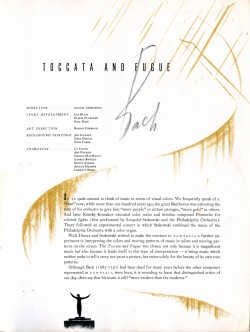 8
8
____
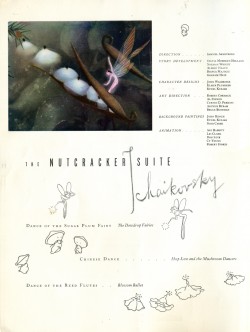 9
9 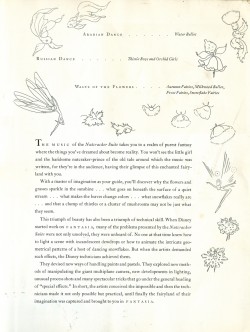 10
10
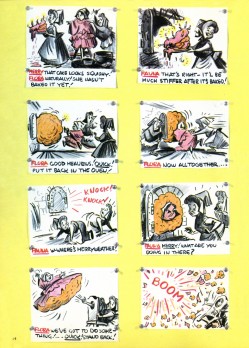 14
14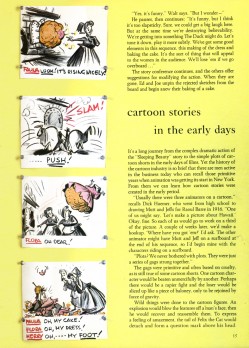 15
15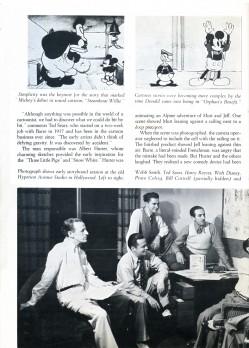 16
16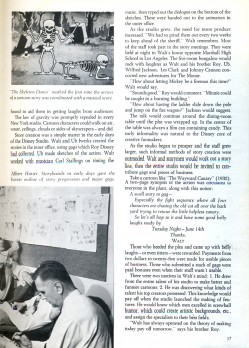 17
17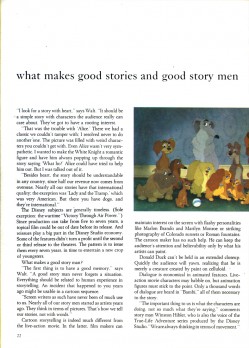 22
22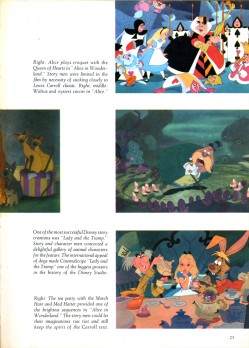 23
23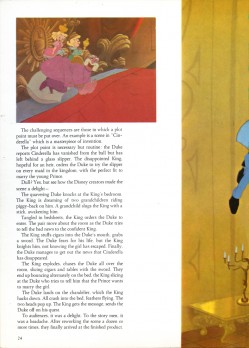 24
24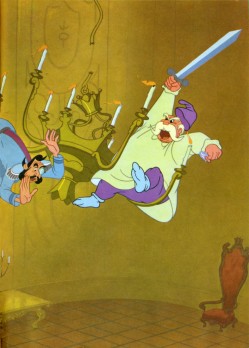 25
25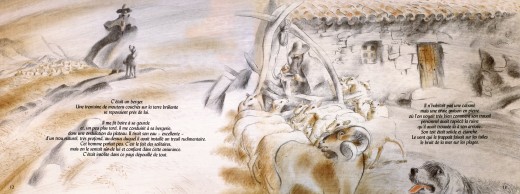
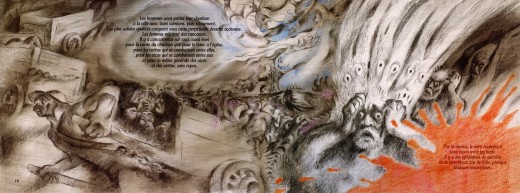
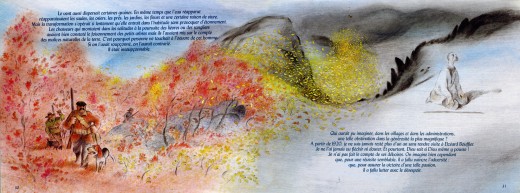
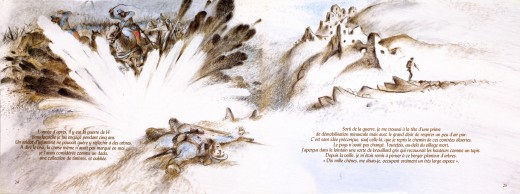
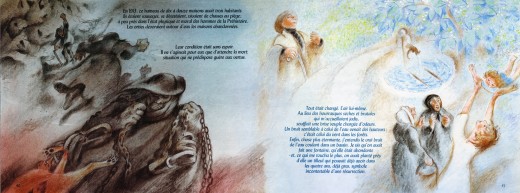
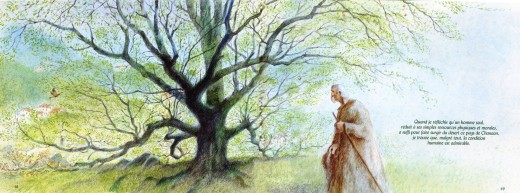
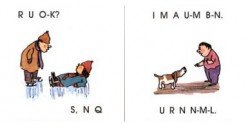
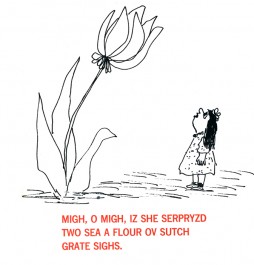
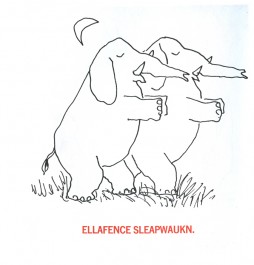
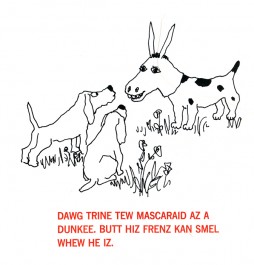
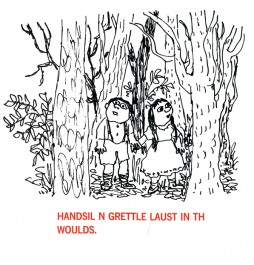
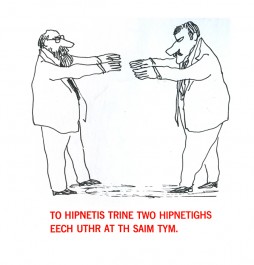
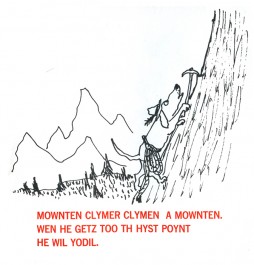
 1b
1b 2a
2a 2b
2b 3a
3a 3b
3b 4a
4a 4b
4b 5a
5a 5b
5b 6a
6a 6b
6b 7a
7a 7b
7b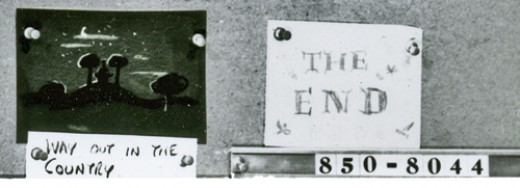 8
8